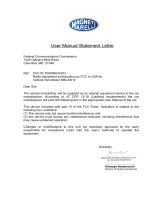
collisions, although they may inflate if the forces
in another type of collision are similar to those of
a higher severity side impact. They are designed
to inflate on the side where the vehicle is
impacted. They may not inflate in certain side
collisions. Vehicle damage (or lack of it) is not
always an indication of proper supplemental side
air bag and curtain side-impact air bag opera-
tion.
When the supplemental side air bag and curtain
side-impact air bag inflate, a fairly loud noise
may be heard, followed by release of smoke.
This smoke is not harmful and does not indicate
a fire. Care should be taken not to inhale it, as it
may cause irritation and choking. Those with a
history of a breathing condition should get fresh
air promptly.
Supplemental side air bags, along with the use
of seat belts, help to cushion the impact force on
the chest of the front occupants. Curtain side-
impact air bags help to cushion the impact force
to the head of occupants. They can help save
lives and reduce serious injuries. However, an
inflating side air bag and curtain side-impact air
bag may cause abrasions or other injuries.
Supplemental side air bags and curtain side-
impact air bags do not provide restraint to the
lower body.
The seat belts should be correctly worn and the
driver and passenger seated upright as far as
practical away from the side air bag, and seated
as far away as practical from the door finishers
and side roof rails. The side air bags and curtain
side-impact air bag inflate quickly in order to
help protect the front occupants. Because of
this, the force of the side air bag and curtain
side-impact air bag inflating can increase the risk
of injury if the occupant is too close to, or is
against, these air bag modules during inflation.
The side air bag and curtain side-impact air bag
will deflate quickly after the collision is over.
After turning the ignition key to the ON
position, the supplemental air bag warning
light illuminates. The air bag warning light
will turn off after about 7 seconds if the
systems are operational.
WARNING
I Do not place any objects near the
seatback of the front seats. Also, do
not place any objects (an umbrella,
bag, etc.) between the front door fin-
isher and the front seat. Such objects
may become dangerous projectiles
and cause injury if the side air bag
inflates.
I Right after inflation, several side air
bag and curtain air bag system com-
ponents will be hot. Do not touch
them; you may severely burn your-
self.
I No unauthorized changes should be
made to any components or wiring of
this side air bag and curtain side-
impact air bag system. This is to pre-
vent accidental inflation of the side
air bag and curtain side-impact air
bag or damage to the side air bag
and curtain side-impact air bag sys-
tem.
I Do not make unauthorized changes
to your vehicle’s electrical system,
suspension system or side panel.
This could affect proper operation of
the supplemental side air bag and
curtain side-impact air bag system.
I Tampering with the supplemental
system may result in serious per-
sonal injury. For example, do not
change the front seat by placing ma-
terial near the seatback or by install-
ing additional trim material, such as
1-14 Seats, restraints and supplemental air bag systems
Z 02.9.13/Z33-D/V5.0 X
























